
I’ve long been a fan of the stubby, little .380. Mostly chambered in pistols that can ride in a pocket holster, the little caliber has gained in popularity as a carry option over the years as advancements in bullet technology have made it more effective.
The .380 Auto was designed by John Browning and introduced by Colt in 1908 for its model 1903 Pocket Hammerless Pistol. The .380 was popular in Europe after its introduction there in 1912 for police and military use, as at least five European militaries adopted it. It has traditionally been considered underpowered and overshadowed in the U.S. by the 9mm or .45 ACP.
However, manufacturers continued to make pistols of this caliber, with more being made today than ever before… the caliber is coming back in a big way. One reason for that is that ammo has improved over the years and is more effective than before, so the guns are more popular. Even though I’ve owned a few .380s from various makers, I was not overly interested in mouse guns (as some call them) until I saw this new S&W Bodyguard 2.0. Smith & Wesson has made .380 pistols for years; this time, they got it right. To put it bluntly, this gun is awesome!
The predecessor S&W Bodyguard .380 pistol was received in a lukewarm fashion by shooters. Being hammer-fired, the long DA trigger pull left something to be desired, and its 6-round capacity left one feeling a bit underwhelmed. But, you could get it with a built-in laser and that extra bling sold many pistols. So, why am I singing the praises of the 2.0 version of the Bodyguard over the older one? There are reasons…
Smith & Wesson Bodyguard 2.0
Live Inventory Price Checker

|
Smith and Wesson Bodyguard 2.0 380ACP 2.75 Barrel 12-Rounds w/ Thumb Safety | GrabAGun | $ 399.99 |
|

|
Smith and Wesson Bodyguard 2.0 .380 ACP 2.75 Barrel 12-Rounds | GrabAGun | $ 399.99 |
|

|
Smith and Wesson Bodyguard 2.0 .380 ACP 2.75 Barrel 10-Rounds w/ Thumb Safety | GrabAGun | $ 399.99 |
|

|
Smith and Wesson Bodyguard 2.0 Magazine .380 ACP 12-Rounds | GrabAGun | $ 37.99 |
|
Design.


For one thing, its design is different than that of its predecessor, Bodyguard. The older one was more squared-off, had a shortened six-round-capacity grip, and didn’t feel right in my hand. The new one looks like somebody stuck an M&P 9mm under the shrink ray that those old sci-fi movies used. The result is a pistol that feels like a mini-M&P… a good thing. The grip feels longer than its forerunner’s and not as clunky. (“Clunky” is the scientific term I use to describe a gun that doesn’t feel right in my hand). The grip is thinner, as well – it just fits. At any rate, the engineers did a good thing. The gun feels great in my hand with the 10-round mag in, and even better with the 12-rounder. That small extension gives all my grip fingers something to hang on to without making it too big for my pocket.
Size & Weight.

While talking about the design of this gun, I need to mention its overall size and weight. The thing is .88-inch wide (one whole inch if you measure across the slide release lever) and weighs. According to my digital scale, it is 9.7 ounces without a magazine and 14.7 fully loaded. Five-and-a-half inches long and only four inches tall… this is one small gun. I am sitting typing this with the gun in my pocket (in the holster shown above – please don’t ever just stick a bare pistol in your pocket!) and I forget it’s there… that’s a good thing! Please remember that you can still get 12+1 rounds in that tiny package. That’s where it becomes amazing!
Grip.

I’m a big grip-texture guy. I’ve been known to put actual stair-tread tape on smooth polymer grips. (Ruger EC9, I’m talking to you!). I like rough texturing – I want the gun not to move once I grab it. My solder iron and I have a special bond from texturing many guns. But… I will not be developing that bond further with this Bodyguard 2.0. There is no solder iron needed as the grip texturing is really good. It’s not shred-your-shirttail rough, but it is coarse enough to allow my hand to stay put on it. That says a lot, coming from me. Manufacturers are finally getting it where texturing a grip is concerned, or at least some of them are. S&W even put textured pads on the forward grip where your trigger finger or your support thumb can rest.
Also, in terms of the grip, it is undercut at the rear of the trigger guard, which allows you a high grip on the gun. That helps tame recoil. The beavertail over your hand has been lengthened a bit, which again allows for a higher grip. The bore axis is low, so the pistol’s muzzle doesn’t rise in recoil … instead, the gun comes pretty much straight back into your hand. The sights stay on target pretty well.
Slide Serrations.
The slide serrations deserve a shout-out. They are placed both fore and aft and go up to the top flat of the slide. They are cut just deep enough to allow a good grip on the slide for charging the chamber or doing a press check to see if it’s loaded. I used the front cuts exclusively when I was weighing all those trigger pulls to get the average pull weight… this is something I don’t usually do, as I tend to use the rear serrations more. That will change with this pistol.
In addition, they made this pistol striker-fired, immediately canceling one of the complaints that many had about the older one – its trigger. This trigger has almost zero take-up and breaks cleanly at an average of 4 pounds, 2 ounces according to my Lyman digital gauge. That’s amazing.
Sights.

The sights on this pistol show forethought. The front is a tritium night sight with an orange ring for daytime use, and the rear is a large U-notch that has serrations to cut glare. (How nice of me to bounce my flash off the rear sight to show glare reduction – HA!). When I say “large”, that’s what I mean, This sight is designed to allow for quick target acquisition and is not designed for precision work. Both sights are dovetailed, with the rear locked in place with a screw so windage adjustment is possible.
Trigger.

The trigger is something to write home about. The trigger itself has a flat face and a safety blade built in. I measured it with my Lyman digital gauge and came away impressed… four pounds, two ounces with very little take-up and no creep. It broke crisply and had a very short reset. This trigger is way better than the one on the original Bodyguard. One difference is that this is a striker-fired gun and the older one used a (hidden) hammer. There’s enough of a difference to make it worth checking the new version out. Also, the mag release is reversible.
Capacity.
Going from a 6-round Bodyguard to this 10/12-rounder is great. You can double the capacity without having a gun that’s been porked out in terms of size and weight.

Specs
- Price: $449.00
- Capacity: 10, 12
- Frame Size: Micro
- Barrel Length: 2.75″
- Safety: No thumb safety (thumb safety and state-compliant models available)
- Weight: 9.8 ounces, no magazine; 14.7 ounces, with a full 10-round magazine
- Color Finish: Black
- Width: .88 inch
- Length: 5.5 inches
- Height: 4.0 inches
- Slide: Stainless with Armornite finish
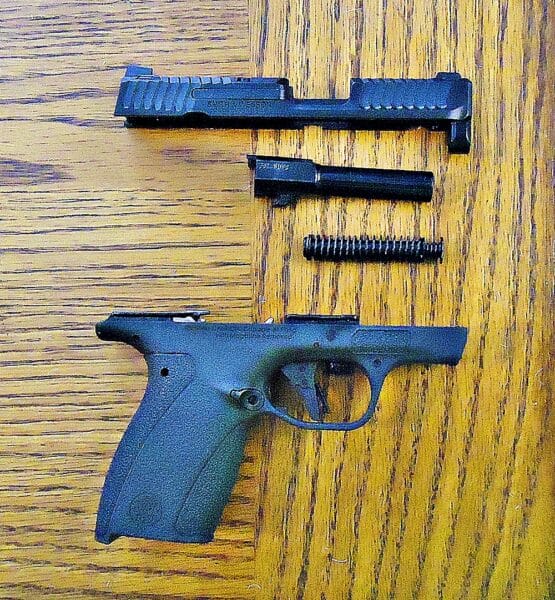
The take-down lever is the easiest of its breed that I have ever used. One finger can turn it downwards – a refreshing change! The gun comes apart like a myriad of other striker-fired pistols:
- Drop the mag and empty the chamber;
- check and double-check that the firearm is clear of all ammunition;
- lock the slide back;
- rotate the takedown lever;
- release the slide;
- pull the trigger.
- Voila… off she comes. Separate the barrel and spring. Clean like crazy and re-assemble. Easy-peasy!
At The Range
I took the Bodyguard 2.0, some targets, my Garmin Xero C1 Pro chronograph, and a small variety of ammo to my backyard range. Then set up on a Caldwell Stable Table Lite, and prepared to see how well I could shoot this little gun. I shot a popular practice load, the Sellier & Bellot 95-grain FMJ, and the 102-grain Remington Ultimate Defense load. These are pretty representative of the basic ammo types available for the .380. I also reload it, but those targets wouldn’t be interesting to you.
The gun performed as expected… no bobbles or hitches.
I will do more shooting with the Bodyguard 2.0 as I am able to stock up on ammo. I do believe this gun would perform a self-defense role very well. As a matter of fact, it is residing in my pocket as we speak.
Here are the results. Overall, they are pleasing. Most groups were not much larger than an inch. I would not be afraid to carry this little guy in my pocket, for sure.

Sellier & Bellot 95-grain FMJ ammo, 847 fps. Great for practice – fairly economical.
And for social work… Remington Ultimate Defense, 915 fps:

Final Thoughts
The world of pocket .380s has expanded. Those of you who carry such a gun should really take a look at this new offering from S&W. The engineers must have listened to shooters. I believe that they will sell these as fast as they can make them, as to my mind they are one of best pocket pistols out there. Reliable, accurate, designed and built very well, and having a great capacity — this gun will be noticed. It’s already racking up many positive reviews from other gun reviewers… that says something. Backed by one of the best customer services in the industry and made to a very high standard, the Bodyguard 2.0 is a winner.
I usually mention what I like and what I don’t like about guns I review… I can’t do that here because there’s nothing to go in the “don’t like” column. At a real-world price of around $400, you’d be hard-pressed to find a better-built .380. It seems other reviewers around the industry are agreeing with me – this little gun is a heck of a buy. If you own one, let’s hear from you below.
About Mike Hardesty
With experience spanning over 45 years, Mike Hardesty has long enjoyed shooting and reloading. An inveterate reloader, he casts bullets and reloads for a diverse array of firearms, each handled with long-practiced precision. Living in rural Indiana, his homestead boasts a personal 100-yard range where he shares his love for guns to his four sons, their wives, and eleven grandchildren. As a recognized author, his writings have been featured in notable platforms like Sniper Country, Bear Creek Arsenal Blog, Pew Pew Tactical, TTAG, Dillon Precision’s Blue Press, and Gun Made, revealing his ongoing passion for firearms at the age of 72.
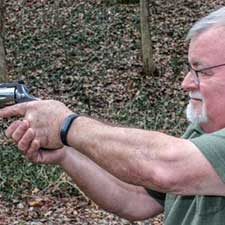

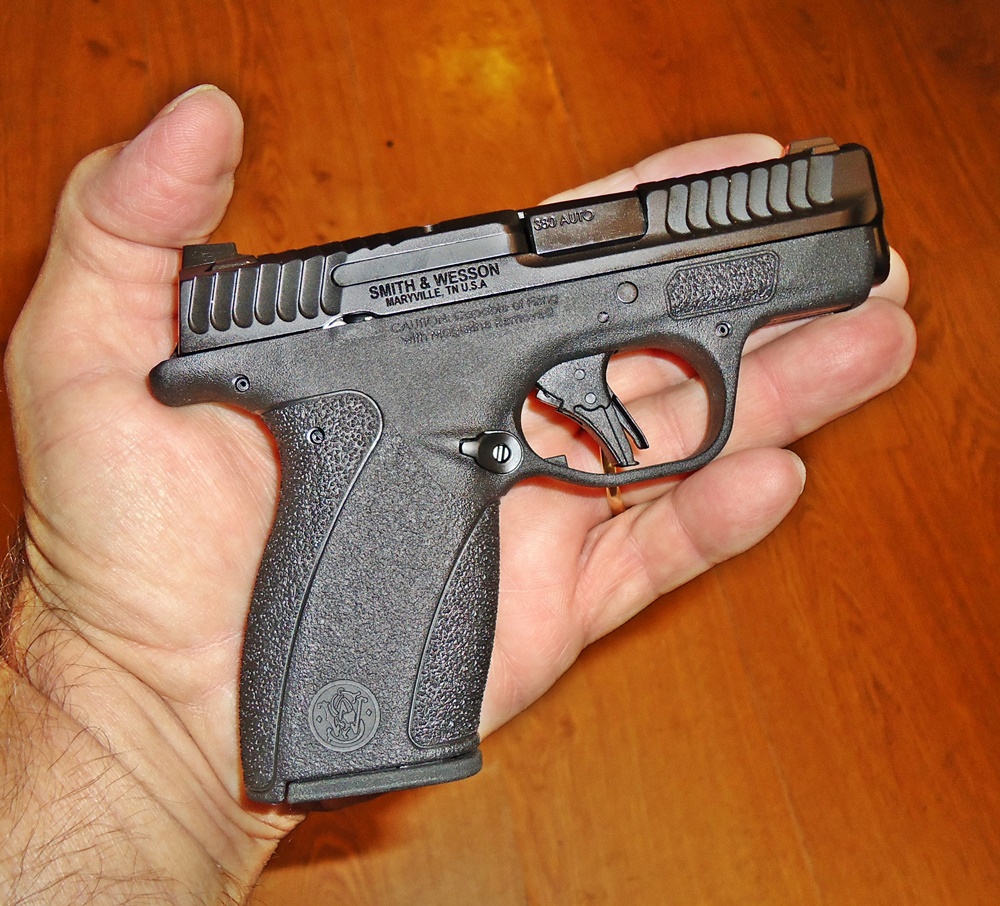
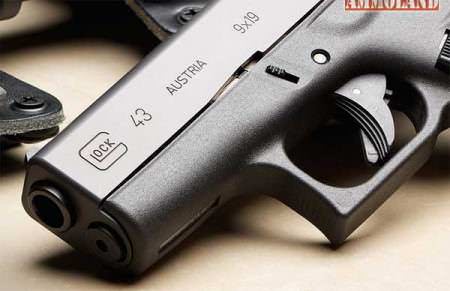
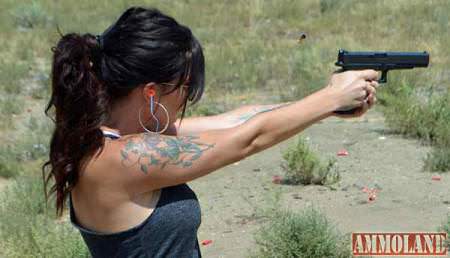
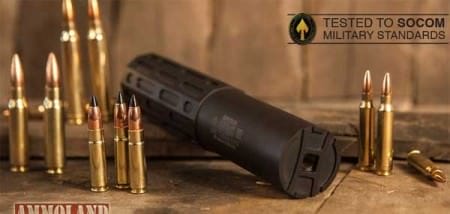
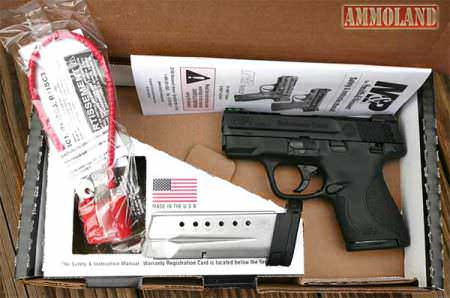

My take: https://www.goodhillpress.com/2024/08/the-smith-wesson-goldilocks-380.html?m=1
How much “windage adjustment” do you need in a five yard pocket pistol? Also I wouldn’t use the”magic” front slide serrations to measure trigger pull. Glad I bought a Ruger LCP Max. Everything is soooo great about this S&W until the adjustable sight falls off.
That trigger looks weak and cheaply made. Admittedly, I have not seen one in person, much less held one, but that trigger…
I would definitely get one with the thumb safety if buying one, like my original model Shield. I would also prefer the original style two-part trigger, as my Shield has.
Finally what appears to be a decent, small .380 that’s getting closer to the AMT380 Backup of a few decades ago; although this is a bit more expensive, even accounting for non-linear inflation that tends to happen with arms. Both SAO and DAO versions were available. I really liked the SAO version with its light trigger (it used a grip safety interlock and a manual thumb safety). 6 rounds. H~3.63″, L~5.0″, W~1.08″, Barrel 2.5″ (note for HLW: H is using flush magazine (no finger tang), and W is using the factory scales. I replaced them with custom scales that reduced… Read more »
The firearm pictured has a very clear manufacturing defect. If you look on the slide, just behind the ejection port, you can see the words “SMITH & WESSON.” I’m not going to go into detail about Smith & Wesson’s “historic” cave to the Clinton administration on the Clinton anti-RKBA agenda. It’s pretty much detailed in the White House press release linked below. https://clintonwhitehouse4.archives.gov/WH/New/html/20000317_2.html I am well aware that the current owners of the Smith & Wesson brand are not the owners who stabbed America’s gun owners in the back. But I believe that the current owners bought that guilt when… Read more »
I tried one last week. It’s more bulky than my LCP (the tradeoff for more rounds), prints a little in my front jeans pocket and henceforth does not draw as easily or as quickly. It is way more comfortable to shoot than the LCP but both handle like cheap little plastic guns in my XL mitts.